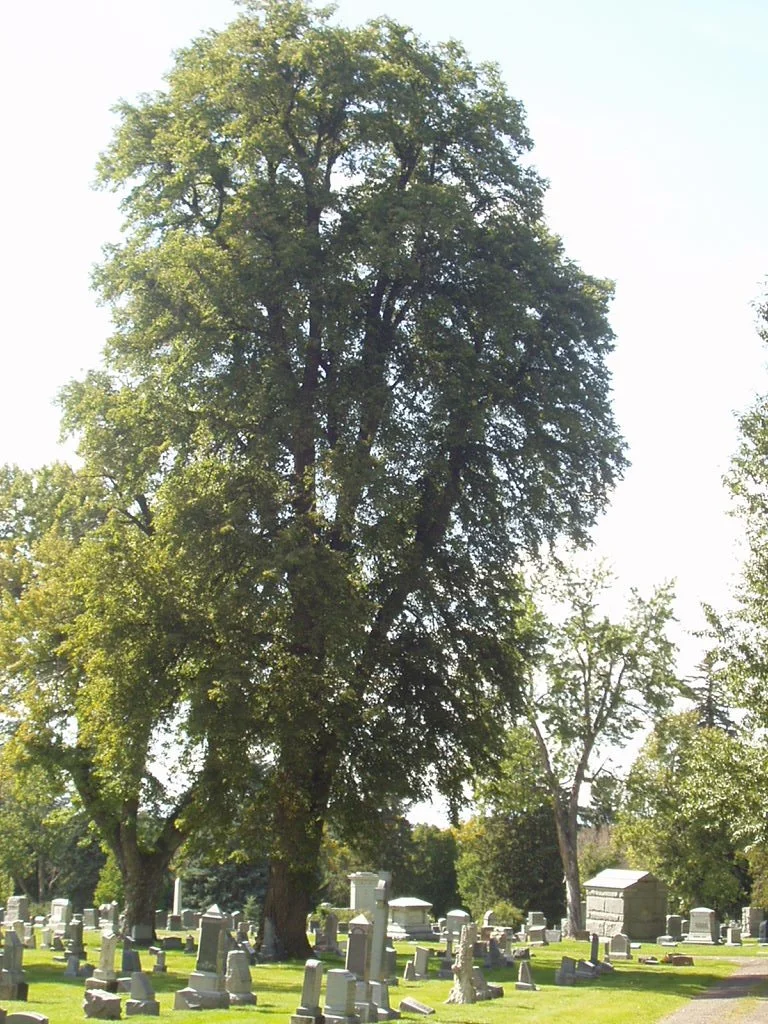littleleaf linden (Tilia cordata)
Champion littleleaf linden at Fairmount Cemetery in Denver.
Species info:
Leaves: Alternate, simple, 1½–3 inches long, nearly as wide as long. Base distinctly heart-shaped (cordate), tip sharply pointed (acuminate), with finely serrated margins. Upper surface dark green, lower surface paler with tufts of hair in vein axils.
Leaf Surface: Smooth and glossy above, lighter beneath.
Bark: Gray-brown, becoming ridged and furrowed with age.
Flowers: Small, fragrant, creamy-white to pale yellow, borne in clusters of 5–7 in pendulous cymes. Each cluster subtended by a pale greenish-yellow, leaflike bract.
Fruit: Small nutlets (~⅕ inch), thin-shelled and smooth (without ribs), maturing to tan or brown in late summer.
Botanical: Tilia cordata
Family: Malvaceae
Mature Height: 40–70 feet
Canopy Spread: 30–50 feet
Foliage Type: Deciduous
Tree Shape: Pyramidal when young; becomes oval to pyramidal-rounded with age and dense branching.
Growth Rate: Medium
Fall Color: Yellow
Flowers: Mildly showy; fragrant
Fruit: Nutlet, persistent
Water Use: Moderate; prefers moist soils but tolerates moderate drought once established.
Hardiness: Zones 3–7
Soil Preference: Prefers moist, fertile, well-drained loams; tolerates clay and slightly alkaline soils.
Wildlife Value: Flowers provide nectar for pollinators (especially bees); seeds occasionally eaten by birds and small mammals.
Pests/Pathogens: Occasional aphid infestations can lead to honeydew and sooty mold on lower leaves or nearby surfaces; favored by Japanese beetle
Planting Recommendations: Recommended for most of the Front Range.
Information Sources:
Michael A. Dirr. Dirr’s Encyclopedia of Trees and Shrubs. Timber Press. 2011


